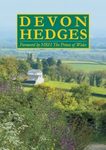By: Gilbert White(Author), Eric Ravilious(Illustrator), James Lovelock(Introduction By)
263 pages, b/w illustrations
![The Natural History of Selborne The Natural History of Selborne]()
Click to have a closer look
About this book
Customer reviews
Biography
Related titles
About this book
A century before Charles Darwin, decades before the French Revolution, Gilbert White began his lifelong habit of measuring and observing the world around his Hampshire home. Daily rainfall levels and temperature shifts were recorded with home-made instruments. Bird song and seasonal migrations were noted. The feeding habits of frogs, bats and mice were jotted into his diaries and nature journals, as were the simple delights he felt hearing a cricket in the meadow or a blackbird in the hedgerows.
The extraordinary detail of the natural history he described has given us, two hundred years later, a glimpse into ecosystems untouched by industry and an account of how changes in global climate can affect local weather patterns. Gilbert White is now considered England's first ecologist. The Natural History of Selborne is one the most published books in the English language. Yet the most enduring quality of his writing is the spirit of curiosity that bounds across every page, inspiring us to explore the abundance of life at our doorsteps and around our parishes.
Customer Reviews
Biography
Gilbert White was born in his grandfather's vicarage at Selborne, Hampshire, in 1720 and was educated by the Poet Laureate Thomas Wharton before studying at Oriel College, Oxford. He was awarded his deacon's orders in 1746, became fully ordained in 1749, and held several curacies in Hampshire and Wiltshire. After his father died in 1758 he returned to 'The Wakes', his family home in Selborne, where he lived as the curate and began his lifelong habit of recording the natural world, keeping journals, publishing articles for the Royal Society, and writing letters to leading botanists and commentators of his day. The Natural History and Antiquities of Selborne was first published in 1789 and has been in print ever since.
By: Gilbert White(Author), Eric Ravilious(Illustrator), James Lovelock(Introduction By)
263 pages, b/w illustrations

















































